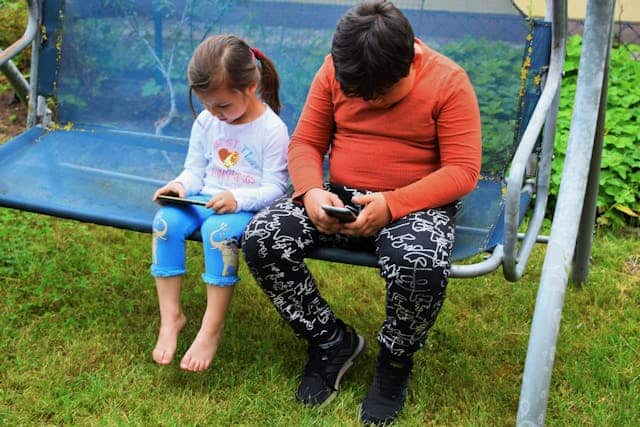How to Choose Apps for Kids?
Deprecated: preg_split(): Passing null to parameter #3 ($limit) of type int is deprecated in /home/dailwtkh/public_html/wp-content/themes/jannah/framework/functions/post-functions.php on line 863

Kids prefer to spend more time on their devices when they have free time or are not in class. Here are some tips for picking out apps for kids to explore that can help them manage their well-being, discover new interests, and balance screen time.
Why is it important to help kids choose apps?
 Most children who enjoy watching material do so on TikTok or YouTube, but the majority of children play video games. In light of this, they may develop the habit of spending their time online in the same manner as everyone else. Because of this, it may be difficult for them to recognize additional chances that are currently available online.
Most children who enjoy watching material do so on TikTok or YouTube, but the majority of children play video games. In light of this, they may develop the habit of spending their time online in the same manner as everyone else. Because of this, it may be difficult for them to recognize additional chances that are currently available online.
Your child will have the opportunity to try new things if you enable them to experiment with different games and applications during their free time. This may, in turn, open their eyes to other possibilities.
To help children develop new interests using their mobile devices, the following are some suggestions:
- Introduce children to a diverse selection of applications.
- Use the same games and applications.
- Discuss the apps that they use.
- Set app screen time limits.
How do I choose the right apps and games?
When it comes to choosing new apps, kids and teens need the advice of adults they trust, such as parents or guardians. Finding what they are interested in is probably going to be a challenge for them.
Some things to keep in mind when selecting new educational apps for your kid or teen are:
1. Think about how old they are and how they’re growing
Apps for kids can range from those that are better suited to younger users to those that are more mature for teenagers. Make sure the games you provide your child are suitable for their age. Content and difficulty level must be considered together.
Age ratings are based on how far along a child is in their developmental timeline. But you are the greatest judge of your child’s needs and talents. To make a well-informed decision, you should educate yourself on age ratings.
2. Consider what your youngster enjoys doing
For what do they live and breathe? What subjects do they find interesting? To win your child, choose applications and games that they already enjoy.
Take their opinions into consideration as you seek to entertain new apps or games. To occupy themselves during the school break, they are more inclined to look into applications and games that they were involved in creating.
3. Find children’s educational applications
You can find a lot of excellent educational games online. Children can benefit from their use in the STEM (Science, Technology, Engineering, and Mathematics) fields, among others. Take a look at our recommended skill-building apps for kids to get you started.
4. Consider the social aspect
The number of social features available in a game or app could vary greatly. Apps for kids that focus on teamwork or multiplayer are a good choice if you value communication and connection with your child. This opens the door for kids to play online with their loved ones.
It can be far easier for some kids to communicate online than in person, particularly those who have specific needs like Autism, ADHD, or other conditions. Consequently, they find a secure environment to communicate in when they select applications and games that include this feature.
5. Offline availability
It is also beneficial when the app is to be used offline, particularly while one is traveling or in a place where network coverage is limited. Offline availability allows users to access the application without the need for an internet connection.
6. Protecting kid’s privacy and safety
Find out if the app collects any unnecessary personal data and if it complies with privacy codes like COPPA.
If you want to protect your child from being exposed to some immoral situations or from becoming distracted, you should select programs that either do not have commercials or have very few advertisements.
Stay away from apps that are centered on freedom, especially those that have internal purchases.
7. Parental Controls
Always give preference to the kid’s apps that have particular features for parents allowing them to control the activity and achievement of their children.
Some people monitor the amount of time that youngsters spend using the application to ensure that it does not go above a predetermined limit.
8. Before you buy, read some reviews
Game and app reviews tailored to parents are available on a plethora of platforms. This is a fantastic resource for parents looking to read reviews of apps and games before making a purchase.
To further assist you in selecting appropriate applications for your children, user reviews can be found in both the Apple and Google Play store. There are many free apps available as well, so don’t feel bad if you can’t afford to purchase new ones.
9. Cost and Value
Free vs. Paid Apps: Consider whether you are getting your money’s worth for the app and how it is beneficial to you. Pay for an application may be useful occasionally when compared to a free one, it not only has fewer ads but might be more functional.
Trial Versions: If feasible, consider using the demo mode to determine the utility of the application before purchasing it.
Wrap Up:
The apps that children should learn and use must be determined, therefore helping kids in choosing the right app is critical. Thus, parents are free to introduce children to a variety of applications, set realistic time limits, and consider the child’s preferences and age. Informal and social applications can be effective for both education and communication. It is always best to read some reviews before downloading an application or using free programs available in stores.
Therefore, whenever you select the kids apps to introduce your children to, you grow their perspective in addition to boosting their development and joyful moments.




